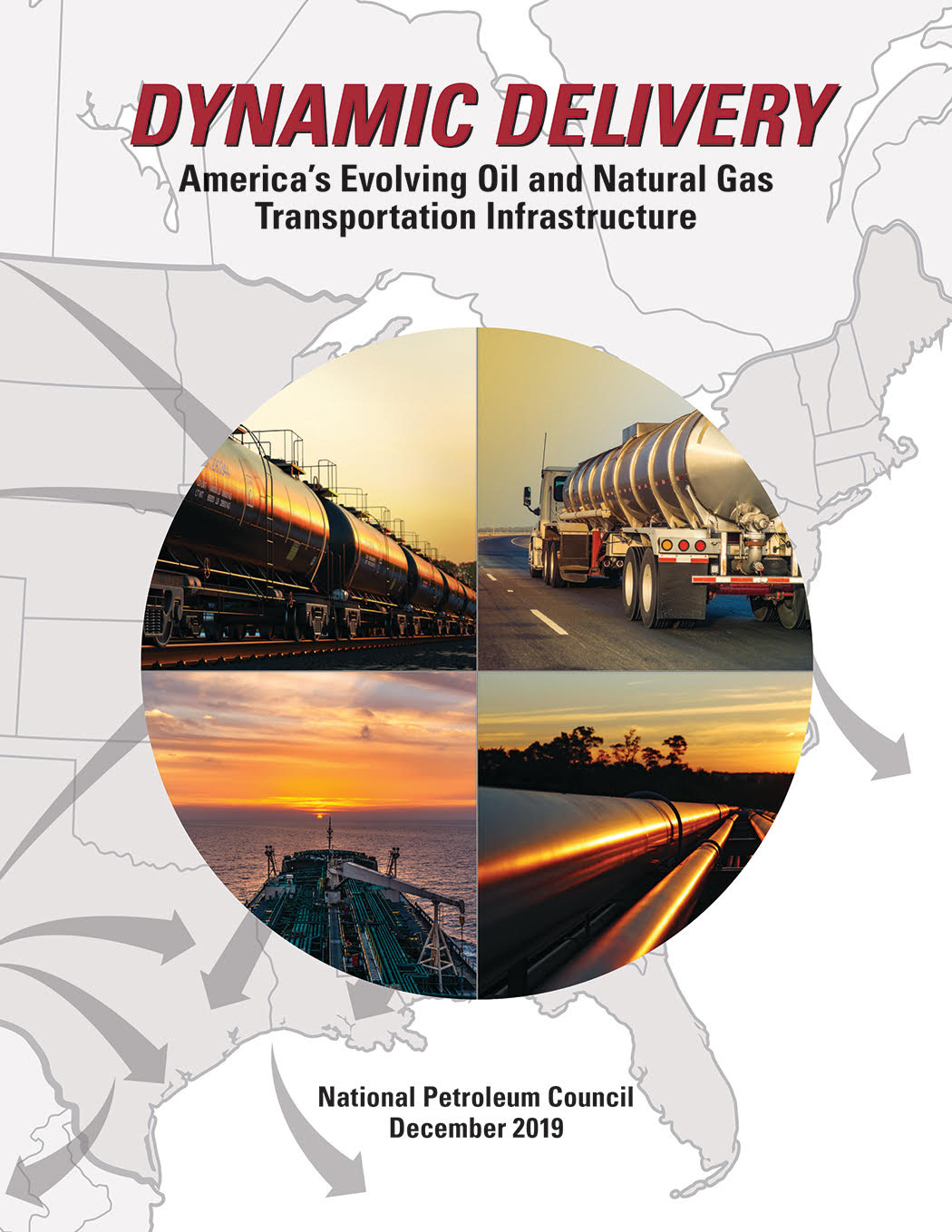About this Report
The U.S. energy landscape has undergone dramatic changes in the past decade. The United States has recently become the world’s largest oil and natural gas producing country, which expands opportunities for exporting crude oil, natural gas, natural gas liquids, and refined products. America’s vast energy resources and the infrastructure to deliver them to market are vital to the nation’s economy and energy security.
Dynamic Delivery, in its analysis through 2040, finds that public and private investment in new and existing pipelines, ports, rail facilities, and inland waterways will be essential in connecting America’s abundant energy supplies with domestic and global demand. Even in energy outlooks with low carbon scenarios, new infrastructure is necessary to meet domestic energy needs. Project uncertainty caused by regulations and litigation are creating bottlenecks to energy delivery in some regions. Addressing climate change and creating greater regulatory certainty are critical to ensuring cost-effective and reliable energy supplies for consumers. The report also recommends regulations that enable new technology and will improve safety and environmental performance.
About the Study Participants
The members of the various groups were drawn from NPC members' organizations as well as from many other industries, state and federal government agencies, Native American Tribes, nongovernmental organizations (NGOs), other public interest groups, consultancies, and academia. More than 300 people served on the study's Committee, Subcommittee, and Task Groups or participated in outreach sessions and workshops. While all have relevant expertise for the study, approximately 44% do not work for oil and natural gas companies or within the oil and natural gas value chain. This broad support and input into the study process is a critical component of the study.
